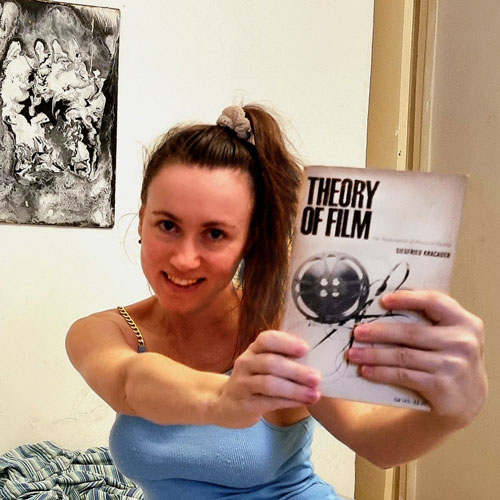 I came across a book with the promising title “Film Theory”. I opened it, thinking that it was a textbook for film directors. And I read: “in this book we will talk about classic black-and-white cinema, and although there are already some films in colour, but…”. And I was like, stop, what year is this edition? It turned out that the early 60’s, when the film “I’m walking across Moscow” came out and it was black and white. Can you believe it? A monograph on cinema from those past times when they made films without colour!
I came across a book with the promising title “Film Theory”. I opened it, thinking that it was a textbook for film directors. And I read: “in this book we will talk about classic black-and-white cinema, and although there are already some films in colour, but…”. And I was like, stop, what year is this edition? It turned out that the early 60’s, when the film “I’m walking across Moscow” came out and it was black and white. Can you believe it? A monograph on cinema from those past times when they made films without colour!
I got curious about what people back then thought about films and their significance. And here are the two main thoughts of people of the last century:
✅ colour interferes with perception, so colourless films are better;
✅ people wanted pictures to move (like in Harry Potter) and the answer was films.
Anything else is just too much of an outdated idea. But even by these ideas, you can feel the swiftness of the times. Less than 100 years ago, people believed, in all seriousness, that colour in video was unnecessary. And even more so, that colour was detrimental to realism because it distracted from the point. Colours are too bright and drag attention to themselves, and then there’s the movement, the sounds, the story itself. One does not do well to grasp everything at once.
And then you remember tiktoks with crazy twisted saturation, music, editing dynamics in 1 frame/sec and flickering subtitles. And it’s ok nowdays — modern people still have time to sit in WC with shorts, and with the other hand to record audio to friends. Is this how our human species has evolved?

